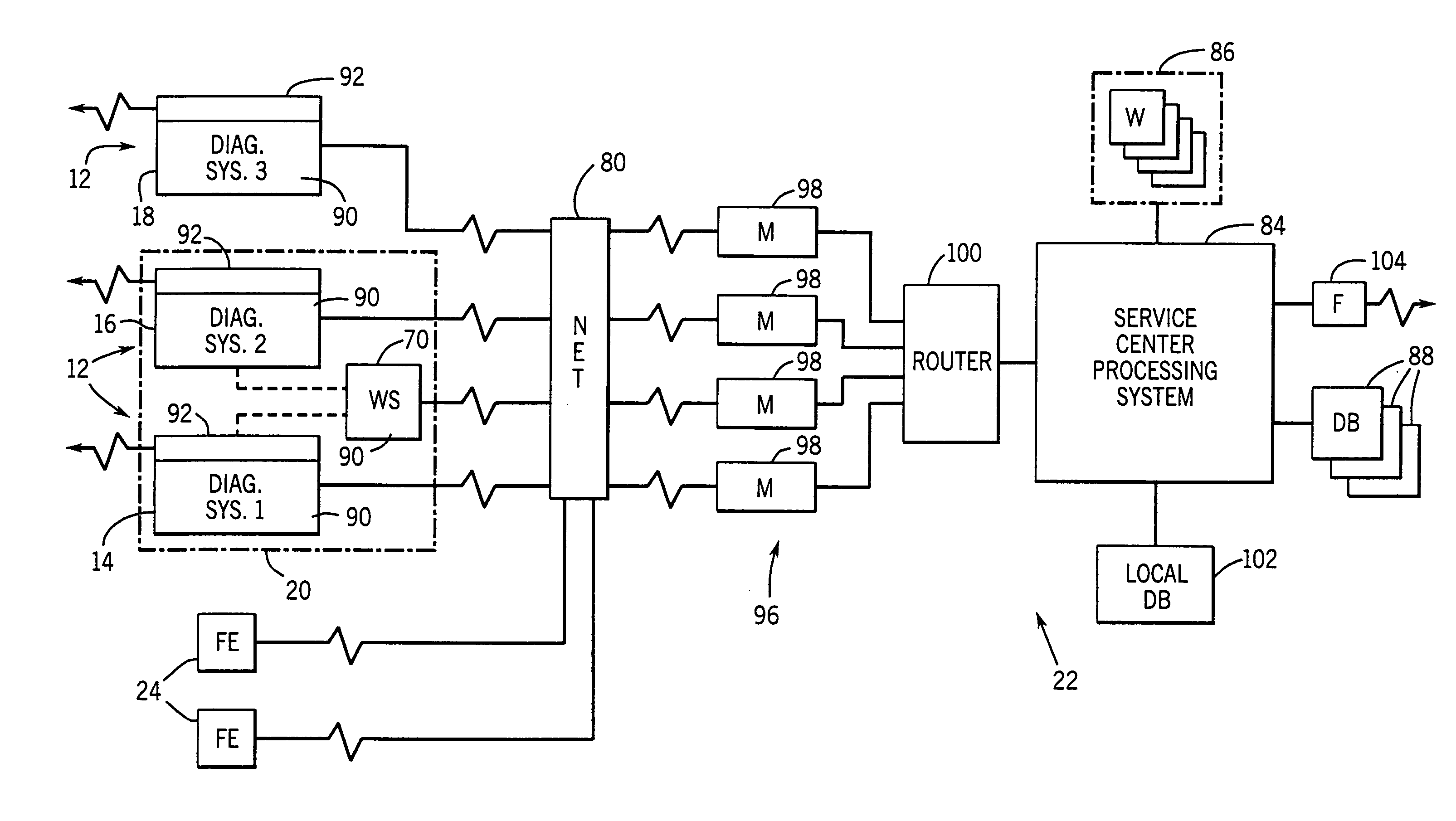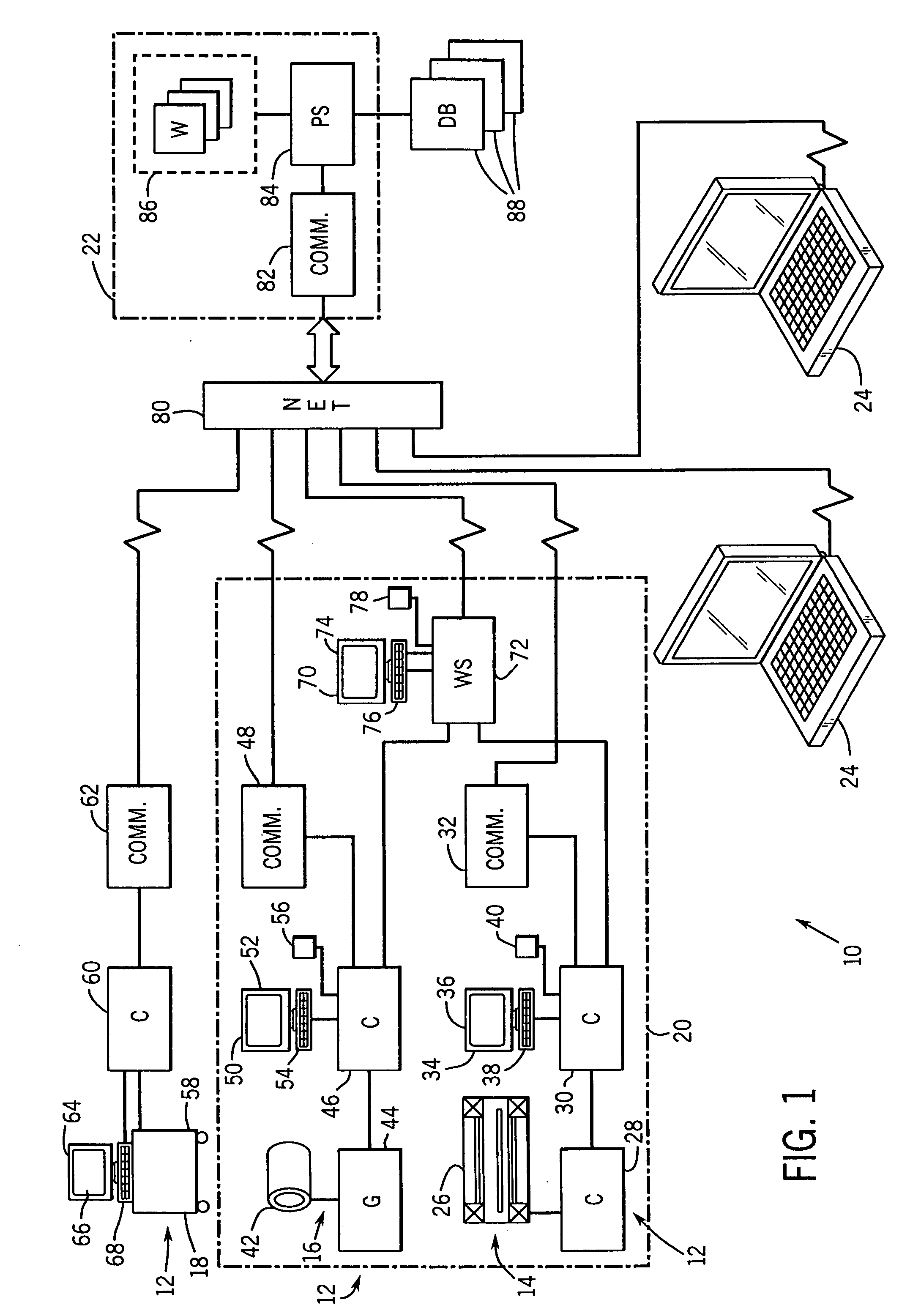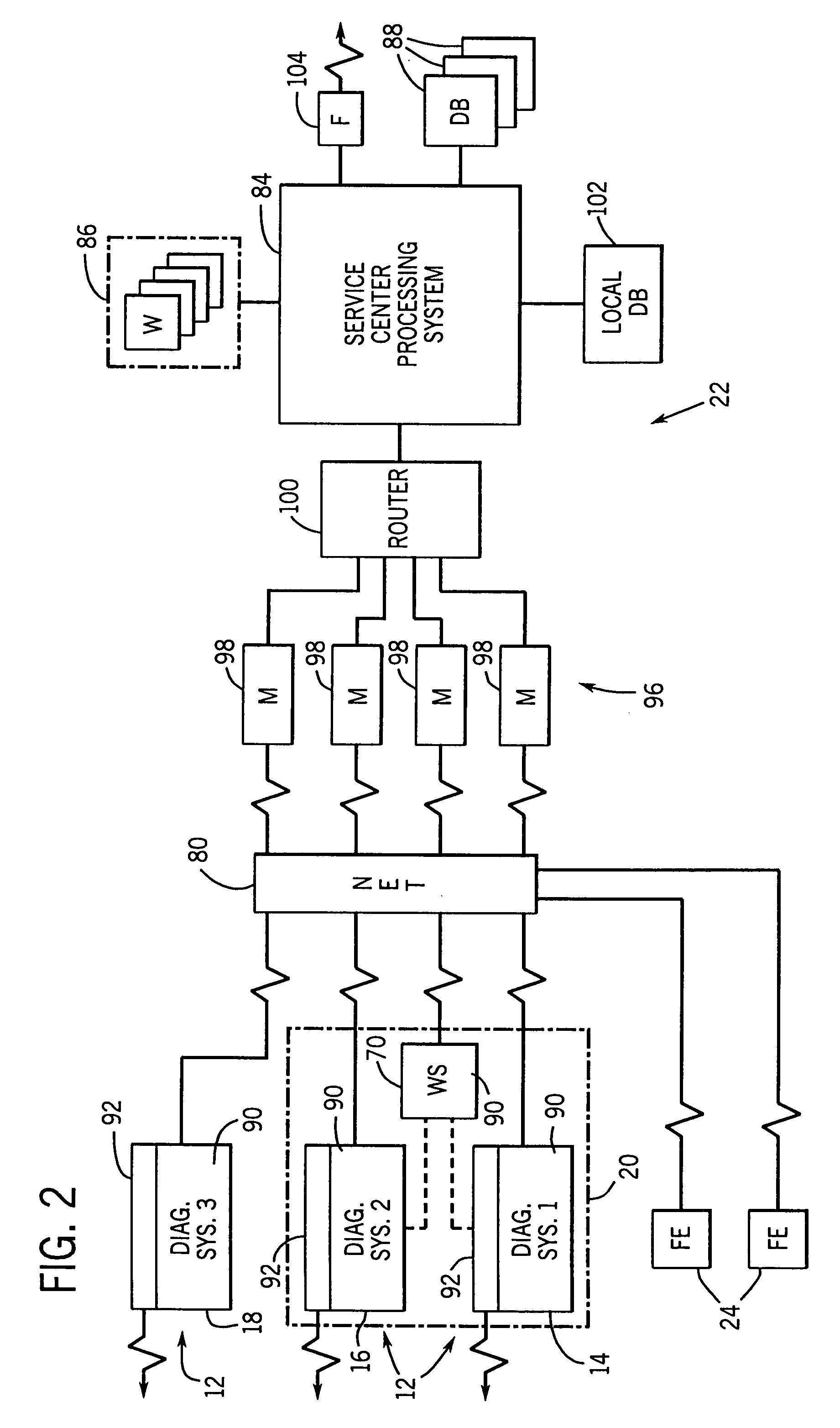Medical diagnostic system service method and apparatus
a diagnostic system and medical technology, applied in the field of medical diagnostic and imaging systems, can solve the problems of system failure to permit such interactive exchange, system limited functionality of scanners, and intermittent conditions indicative of potentially serviceable problems
- Summary
- Abstract
- Description
- Claims
- Application Information
AI Technical Summary
Benefits of technology
Problems solved by technology
Method used
Image
Examples
Embodiment Construction
[0030]Turning now to the drawings, and referring first to FIG. 1, a service system 10 is illustrated for providing remote service to a plurality of medical diagnostic systems 12. In the embodiment illustrated in FIG. 1, the medical diagnostic systems include a magnetic resonance imaging (MRI) system 14, a computed tomography (CT) system 16, and an ultrasound imaging system 18. The diagnostic systems may be positioned in a single location or facility, such as a medical facility 20, or may be remote from one another as shown in the case of ultrasound system 18. The diagnostic systems are serviced from a centralized service facility 22. Moreover, a plurality of field service units 24 may be coupled in the service system for transmitting service requests, verifying service status, transmitting service data and so forth as described more fully below.
[0031]In the exemplary embodiment of FIG. 1, several different system modalities are provided with remote service by the service facility. T...
PUM
 Login to View More
Login to View More Abstract
Description
Claims
Application Information
 Login to View More
Login to View More - R&D
- Intellectual Property
- Life Sciences
- Materials
- Tech Scout
- Unparalleled Data Quality
- Higher Quality Content
- 60% Fewer Hallucinations
Browse by: Latest US Patents, China's latest patents, Technical Efficacy Thesaurus, Application Domain, Technology Topic, Popular Technical Reports.
© 2025 PatSnap. All rights reserved.Legal|Privacy policy|Modern Slavery Act Transparency Statement|Sitemap|About US| Contact US: help@patsnap.com



